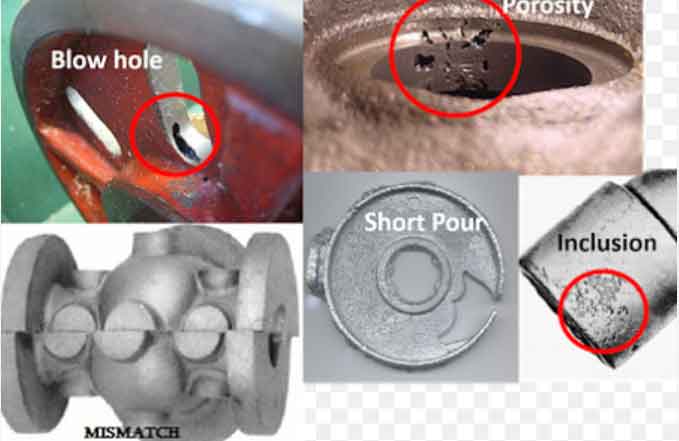
Casting defects can have a significant impact on the quality, performance, and reliability of metal castings. Understanding the consequences of these defects is crucial for manufacturers to prioritize defect prevention and implement measures to ensure high-quality castings. This article explores the various impacts of casting defects and emphasizes the importance of ensuring quality in metal casting processes.
- Component Integrity and Performance:
- Structural Integrity: Casting defects such as cracks, porosity, and inclusions compromise the structural integrity of the component, reducing its load-bearing capacity and overall strength.
- Mechanical Properties: Defects can alter the mechanical properties of the casting, leading to decreased hardness, lower tensile strength, and diminished fatigue resistance, impacting its performance under operational conditions.
- Dimensional Accuracy: Defects like shrinkage, misruns, or warpage can result in dimensional variations, leading to improper fitment, assembly issues, and functional failures.
- Reliability and Durability:
- Service Life: Casting defects increase the risk of premature failure or reduced service life of the component, impacting its reliability and durability.
- Fatigue Resistance: Defects act as stress concentrators, initiating and propagating fatigue cracks, which can significantly reduce the component’s fatigue resistance and reliability.
- Environmental Resistance: Porosity, inclusions, and other defects may compromise the component’s resistance to environmental factors such as corrosion, oxidation, or chemical attack, affecting its long-term performance.
- Manufacturing Efficiency and Cost:
- Scrap and Rework: Casting defects result in increased scrap rates and the need for rework or repair, leading to additional production time, labor, and material costs.
- Production Delays: Defects can cause production delays as the identification and resolution of casting issues require additional time and resources.
- Overall Cost: The cost associated with defect detection, analysis, and corrective actions, as well as potential warranty claims or customer dissatisfaction, significantly impact the overall cost of casting production.
- Customer Satisfaction and Reputation:
- Product Quality: Casting defects compromise the quality of the final product, affecting customer satisfaction and potentially leading to a loss of customer trust and reputation.
- Performance Expectations: Defects may cause the component to fail to meet the customer’s performance expectations, resulting in dissatisfaction and potential loss of business.
- Brand Image: Consistently delivering high-quality, defect-free castings contributes to a positive brand image and customer perception of reliability and competence.
- Safety Considerations:
- Component Failure: Casting defects jeopardize the safety of the end-users if they lead to unexpected component failure, especially in critical applications such as aerospace, automotive, or medical industries.
- Liability and Legal Consequences: Defective castings may result in liability claims and legal consequences if they cause accidents, injuries, or property damage.
Casting defects have far-reaching impacts on component integrity, reliability, manufacturing efficiency, customer satisfaction, and safety. To ensure quality in metal casting processes, manufacturers must prioritize defect prevention through robust design practices, meticulous process control, effective quality assurance, and continuous improvement initiatives. By minimizing casting defects and producing high-quality castings, manufacturers can enhance performance, durability, customer satisfaction, and brand reputation while reducing costs and safety risks.
